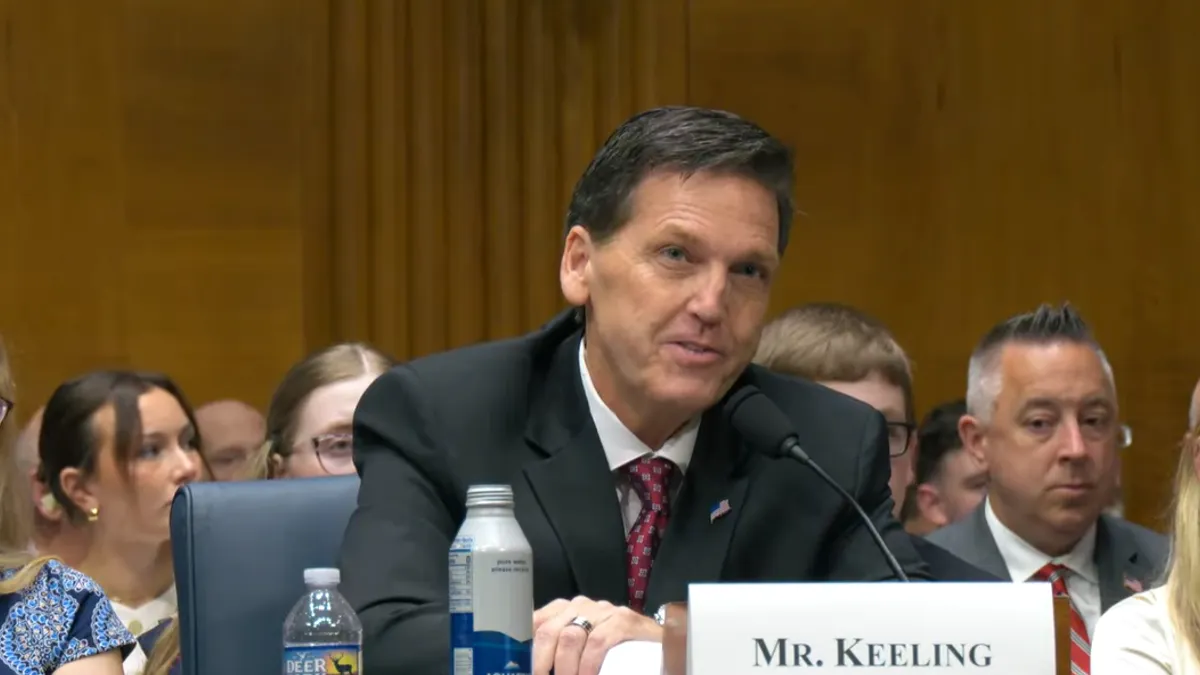Contractors in all sectors of the construction industry have expressed their frustrations about how much meeting regulatory requirements is costing them. A recent National Association of Home Builders report found that government fees — local, state and federal — added nearly 25% to the cost of a home. Trade associations are also fighting the Department of Labor over new stipulations in the agency's silica and overtime rules — changes the industry said will cost contractors millions, perhaps billions, to fully comply. Costs to homebuilders are so steep that they are limiting the supply of entry-level homes, making it more difficult for first-time buyers to enter the housing market.
Among the rules receiving pushback from the construction industry, these are some of the most controversial right now:
Silica rule
The DOL's Occupational Safety and Health Administration enacted new requirements in March under its existing silica rule that further restrict worker exposure to "respirable crystalline silica," which is dispersed into the air whenever silica-containing materials are cut or ground, which occurs often on most construction sites. Constant breathing of silica dust, which is 100 times smaller than sand, can result in severe respiratory illnesses such as silicosis, lung cancer and tuberculosis, according to the Centers for Disease Control.
Although there has been a silica rule on the books since the 1970s, OSHA determined that lowering exposure limits from 250 micrograms per cubic meter of air over an average of eight hours to 50 micrograms and instituting certain medical surveillance measures could save approximately 600 worker lives annually and prevent approximately 900 new cases of silica-related health problems. The rule also requires that contractors utilize additional engineering controls — such as water or ventilation to manage the dust — or provide appropriate personal protective equipment to exposed workers.
OSHA estimates the new rule will cost the construction industry as a whole approximately $500 million for implementation. However, the Construction Industry Safety Coalition (CISC), a group made up of a wide range of trade associations including the Associated General Contractors of America and the Associated Builders and Contractors, contend that the measure will cost almost $5 billion per year in direct costs, productivity loss, medical surveillance and recordkeeping. Although the CISC argued that the technology required to monitor the new exposure limits is not available to most contractors, construction trade unions have fired back and have said the technology has been available for a few years now and that even the new OSHA requirements are, in essence, outdated.
Major industry groups, including the AGC and ABC, have filed a legal challenge to block implementation of the rule, which is set to take effect June 23 and gives construction companies one year to comply.
Overtime wage rule
Another DOL rule that has galvanized major trade associations in opposition is the agency's new overtime rule, which raises the exempt threshold for salaried workers from $23,660 to $47,476 per year. In other words, salaried workers making less than the new threshold must be paid overtime wage rates if they work more than 40 hours in a week. Not only did the DOL raise the threshold, but the new rule allows for automatic increases every three years.
The chairman of the National Association of Home Builders, Ed Brady, called the DOL's action "sheer arrogance," and the ABC said the rule would only spur companies to put salaried employees on an hourly pay schedule. The ABC added that the exemption amounts did not take into consideration different pay levels in various regions of the country. Several major trade associations have said that the new rule would not raise wages but, on the contrary, force companies to reduce hours and benefits.
Davis-Bacon Act
Not quite as firmly in the construction industry crosshairs at the moment like the silica and overtime rules, but still a point of contention, is the Davis-Bacon Act requirement that contractors pay prevailing wages on public work projects. This wage rate is often higher than contractors, especially smaller ones, would normally pay. In addition to paying the higher rate, contractors are also required to fill out detailed pay forms and submit them regularly to the lead contractor or owner.
Advocates for the rule say it "levels the playing field" during the bidding process, keeping contractors from lowering wages as a way to trim the overall cost of the project. Opponents argue that the union wages used as the regulations benchmark don't always fall in line with regional pay rates.
In March, NAHB First Vice Chairman Granger MacDonald testified before the House Financial Services Subcommittee on Housing and Insurance and told Congress that the regulation prevents smaller construction firms from competing for some federally funded projects, echoing long-time industry concerns.
And in April, the U.S. Court of Appeals for the D.C. Circuit ruled against a DOL decision that allowed a prevailing wage scale to be use on a privately owned, luxury mixed-use development in Washington, DC. The court said prevailing, or Davis-Bacon, wages are required on public works projects but that the project in question did not fall into that category because the city was not party to any of the construction contracts, and the development was not considered a "public work." A ruling in favor of the DOL could have led to construction companies and developers being required to pay prevailing wages on privately funded, operated and owned projects even if the public role was limited to having "some hand in leasing the property or approving how it’s used," according to the court.
Residential lot development regulations
The NAHB grabbed headlines last month when it reported that regulations added 24.3% to the cost of a new home. Nearly 15% of that figure, however, is racked up before one shovel even hits the ground, and that percentage could be higher, depending on the area of the country. In addition, regulatory costs — including delays, zoning approval costs, the value of dedicated land required to be left as a green space or otherwise unbuilt, changes in development standards and miscellaneous preconstruction costs — make up more than 54% of a builder's land costs.
These costs create additional challenges for the residential construction industry, as a recent NAHB survey found that a record 64% of builders are having trouble finding available lots, particularly in the premium category. The majority of builders responding to an NAHB survey reported that the cost and availability of developed lots was a top-two concern going forward.
Residential construction regulations
After land is developed comes another set of regulations applicable to construction in progress. The NAHB estimated that these costs represent more than 14% of a builder's costs and almost 10% of the final price tag of a home. These costs include permits, utility hookup fees, impact fees and the cost to comply with new building codes and standards. What's not reflected in the NAHB numbers, however, are the fees imposed on suppliers in the form of tariffs or other regulations around the import of certain materials. In addition, requirements for items like fire sprinklers, which vary from region to region, could add as much as $6,000 to the builder's costs.




















